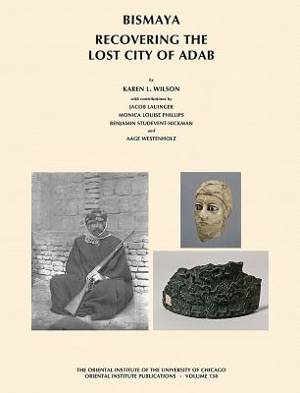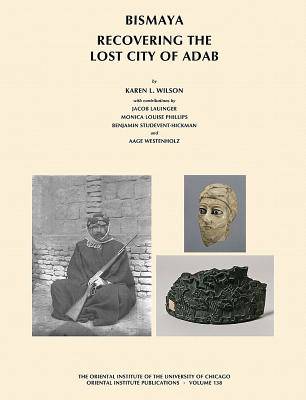
- Afhalen na 1 uur in een winkel met voorraad
- Gratis thuislevering in België vanaf € 30
- Ruim aanbod met 7 miljoen producten
- Afhalen na 1 uur in een winkel met voorraad
- Gratis thuislevering in België vanaf € 30
- Ruim aanbod met 7 miljoen producten
Zoeken
Bismaya
Recovering the Lost City of Adab
Jacob Lauinger, Monica Louise Phillips, Benjamin Studevent-Hickman, Karen Wilson
€ 94,45
+ 188 punten
Omschrijving
An expedition from the University of Chicago excavated the site of Bismaya (ancient Adab) from December 24, 1903, until late June 1905. The excavations were directed first by Edgar J. Banks and then, briefly, by Victor S. Persons. Over 1,000 artifacts, many of them early cuneiform documents, were sent to Chicago, where they are now housed in the Oriental Institute Museum The results of the Bismaya excavations were never properly published, and most of the material was never published at all. Banks wrote a lively and highly readable popular account, Bismya, or the Lost City of Adab, that appeared in 1912 and gave the impression that his field methods were considerably less than satisfactory. However, that was not the case. Banks kept a careful field diary, complete with highly accurate sketches, and sent detailed weekly reports, lavishly illustrated with his own drawings, back to Chicago. These materials show that he excavated a mid-third millennium B.C. temple and discovered some of the world' s first historical inscriptions incised on stone vessels dedicated in that structure. He also uncovered residences of the late Early Dynastic period, two Akkadian administrative centers, and a palace of the Isin-Larsa/Old Babylonian period. This monograph presents this large and significant corpus of unpublished material and includes analyses of stratigraphy, architecture, sculpture, cylinder seals, metalwork, and pottery, and discussions of chronology, the succession of the first kings of Adab, and administrative practices during the third millennium B.C.
Specificaties
Betrokkenen
- Auteur(s):
- Uitgeverij:
Inhoud
- Aantal bladzijden:
- 194
- Taal:
- Engels
- Reeks:
Eigenschappen
- Productcode (EAN):
- 9781885923639
- Verschijningsdatum:
- 30/07/2012
- Uitvoering:
- Hardcover
- Formaat:
- Ongenaaid / garenloos gebonden
- Afmetingen:
- 236 mm x 305 mm
- Gewicht:
- 1882 g

Alleen bij Standaard Boekhandel
+ 188 punten op je klantenkaart van Standaard Boekhandel
Beoordelingen
We publiceren alleen reviews die voldoen aan de voorwaarden voor reviews. Bekijk onze voorwaarden voor reviews.











